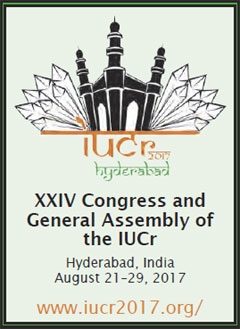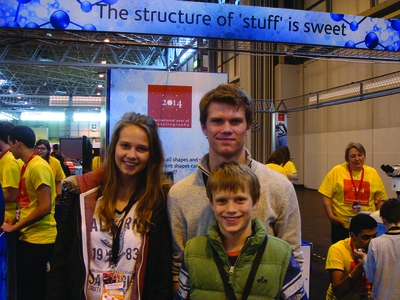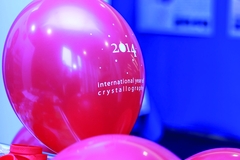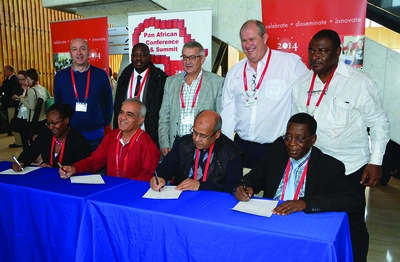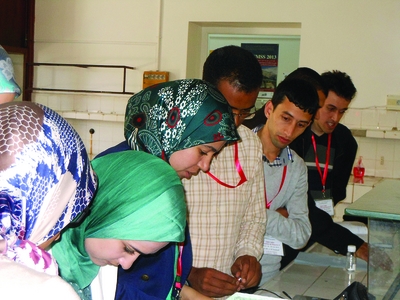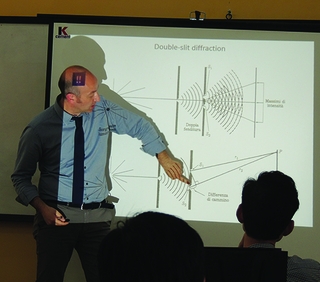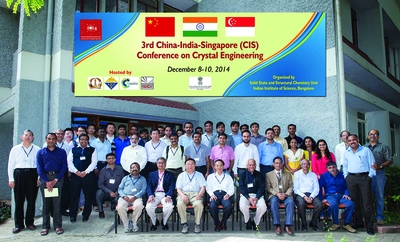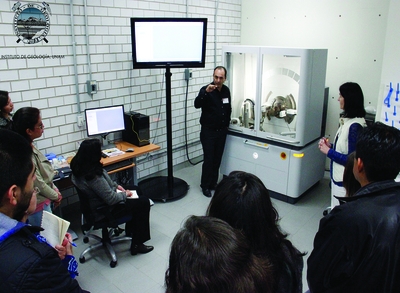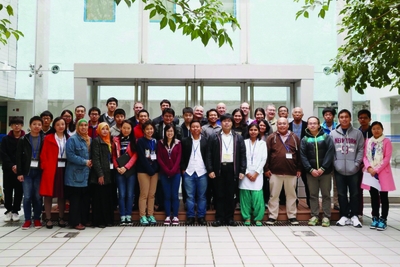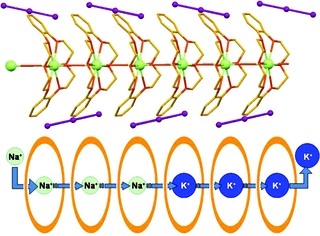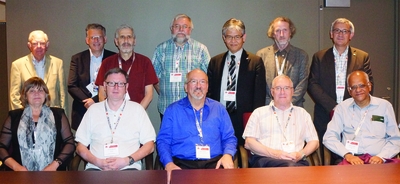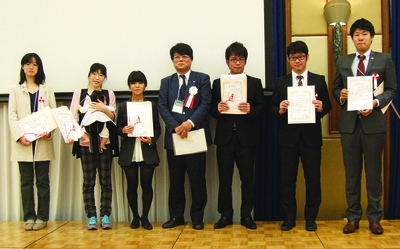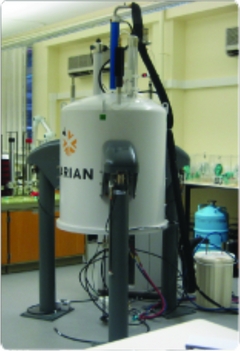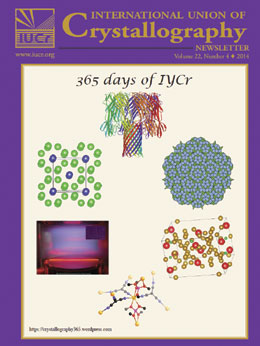
Images from the website '365 Days of IYCr' (https://crystallography365.wordpress.com/structures). Clockwise from top: (1) Side view of α-Haemolysin from Staphylococcus aureus with each segment coloured a different colour of the rainbow. PDB reference 7AHL; (2) A Penrose tiling using thick and thin rhombi (diamonds). Note the aperiodic structure, shared by all Penrose tilings; (3) The 'neodymium magnet'. The material has a chemical structure Nd2Fe14B, so it's really mostly iron (the Nd are the red atoms in the structure shown above, the B is green). They're used in a range of applications, from electric motors to hard discs. In the last few decades, a range of powerful new magnetic materials have been discovered which use the rare-earth elements as a constituent; it's one of the hidden revolutions in material science; (4) The crystals of Cd(tcm)B(OMe)4.xMeOH took six months to grow, and seemed to appear almost overnight as beautiful and very large elongated octahedra. Note that they didn't grow slowly and evenly over those six months, but rather the solution was completely devoid of crystals for almost all the time, and then suddenly huge crystals; (5) The sideview of a plasma crystal in the laboratory. Dust particles are suspended in an argon plasma above a high-frequency electrode. The horizontal field of view is 2 cm. From the Max Planck Plasma Crystal Experiment www2011.mpe.mpg.de/pke/index_e.html; (6) High-pressure phase Barium IV, published in 1999. It was found using a combination of single-crystal and powder X-ray diffraction at 12.1GPa. In other words, about 100,000 times atmospheric pressure. Image generated by the VESTA (Visualisation for Electronic and STructural analysis) software http://jp-minerals.org/vesta/en/.



